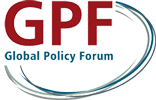By Stephanie Collin
In a context of development budget cuts across Europe, it is becoming increasingly unlikely that donors will meet the target of scaling up ODA to 0.7% of their gross national income by 2015, as they have committed to. European ODA disbursements have fallen over the past two years. With the current downward trend, it will even be challenging to maintain current levels. That said, donors are thinking of alternative development financing sources besides grants that could be reported as ODA. As highlighted by the DAC Secretariat, one tempting way of doing this would be to provide more aid to developing countries in the form of concessional loans: ‘[….] some members are finding it challenging to deliver on their commitments to increase ODA. Ways in which ODA could be increased without budgetary costs may therefore seem attractive.’
This is not a hypothetical scenario. DAC figures for the past few years show that donors have significantly increased the share of their aid disbursements that come in the form of concessional loans. In the case of bilateral donors from the DAC, those loans doubled from 2001 to 2011 – from USD $8 to $16 billion. Loans by multilateral institutions from the DAC increased from USD $19 billion in 1995 to $42 billion in 2011.
At the level of bilateral donors, this trend has been highlighted in the DAC peer-review of France, which concluded there had been a sharp increase in the share of loans and a corresponding decrease in grants over the past few years. While loans accounted for 14% of France’s annual bilateral commitments in 2005, the share soared to 40% in 2012, and is expected to increase further. The review concluded: ‘[…] it is of concern to note that the 2013 budget law forecasts a noticeable downward trend in grants, which would shrink from EUR 577 million in 2012 to 500 million in 2015, whereas bilateral loans would rise from EUR 1,818 million to 2,668 million over the same period’.
There is a similar scenario in the UK, which has so far been disbursing its bilateral aid exclusively in the form of grants, but is now considering setting up a new institution for providing concessional finance (see ongoing inquiry).
A healthy debate on refining the rules
It is in this context that the Organisation for Economic Co-operation and Development (OECD) DAC is currently reviewing the rules that donors need to respect in order to report loans as ODA. The DAC has been asked to facilitate this discussion among DAC donors in order to arrive at a revised definition by 2015.
According to the current rules, ODA loans should have development as their main purpose, they should be ‘concessional in character and should include a ‘grant element’ of at least 25%. The threshold against which concessionality is measured is a fictional interest rate of 10%, which is much higher than the rates at which donors borrow money on financial markets.
This debate is healthy: ‘[w]e need to open up some of these boxes, some of the methodologies,’ said Jon Lomoy, Director of the OECD development co-operation directorate. It is indeed questionable that the current methodology allows donors to provide loans at interest rates that are higher than the market rates at which they borrow themselves, but can nevertheless meet all the concessionality requirements and count as ‘aid’, despite including no subsidy at all. By making a profit on such loans, donors are not being as altruistic as the term ‘donor’ would imply.
It is therefore key that any reform of the ODA reporting criteria that the DAC uses leads to a stricter definition of ‘concessionality’. However, given the rich country governments’ known desire to artificially inflate their ODA figures, there is a risk that reforms of the ODA reporting methodology might go in the wrong direction. Civil society watchdogs and recipient countries should take a close look at what is currently happening at the DAC, otherwise the poor could be short-changed.
In a forthcoming briefing, Eurodad will outline the core issues in the current DAC discussion on reporting rules for concessional loans. The briefing will analyse those reporting requirements, outline the flaws stemming from their ambiguity, including some examples of questionable implementation of these requirements by some donors. The paper will point out how the reporting rules contribute to inflating aid figures in the short term and raise concerns about debt sustainability.
